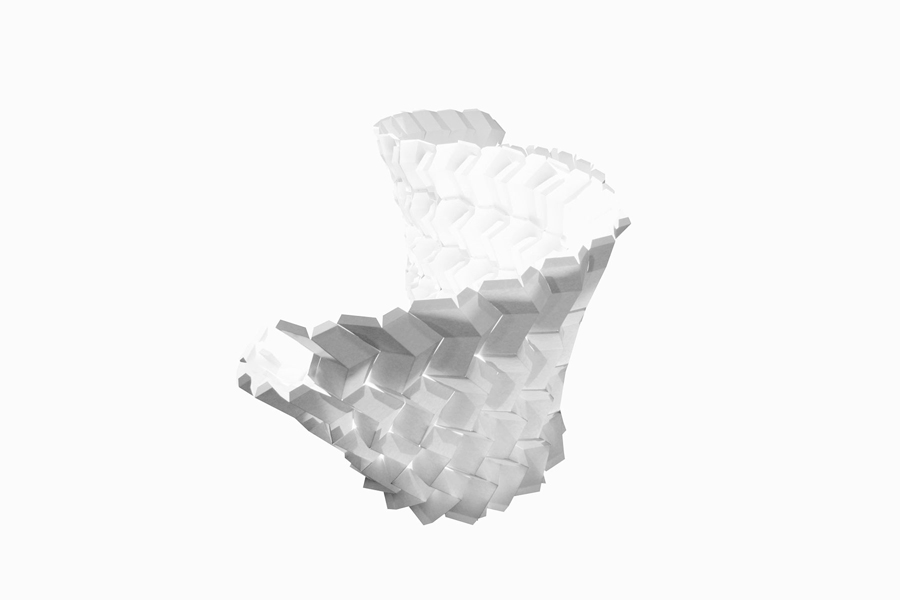


Theme: Folding; Modularity; Wall; Paper
What: A study in the simplicity and complexity in folded structures and how further complexity can be achieved through modularity.
_
This flexible partition system originally stemmed from the idea of the folded plate structure. We were intrigued by its simplicity and inherent structural qualities through its form. We experimented with deconstructing the form into modules in order to gain more flexibility as a whole. The focus then became on the joinery technique since we wanted to maintain the original structural integrity of the folded plate. The horizontal connection used the module itself to lock into adjoining pieces, while the vertical connection required additional rivets to support the weight of the structure.
The modularity of this wall allowed for flexibility in size that ultimately allowed for flexibility in its spatial configurations. The resultant compression and tension forces acting on the structure could also be seen in the magnitude of folding in corresponding areas, which was an added visual bonus. The model was built at 1:1 scale.